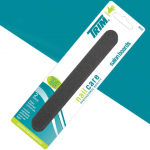 A great website doesn’t start with design. You may only see what’s on the surface — a well-designed and well-functioning website. But behind it is weeks, sometimes months, of strategic planning.
A great website doesn’t start with design. You may only see what’s on the surface — a well-designed and well-functioning website. But behind it is weeks, sometimes months, of strategic planning.
Without it, your website wouldn’t exist in the first place.
You would never build a house without a plan. Even before you meet with your contractors, you have an idea of what you want out of your house. The same goes for your website.
Not allocating the time and resources necessary to strategically plan your website is the biggest mistake companies make. While these steps will vary based on your company’s needs, here’s what a well-developed tactical Web strategy should look like:
Step 1: Establish Your Goals
Before your Web design agency starts creating a website, make sure you’re clear on the basics: What are you trying to achieve with your new website? What is your website’s main purpose?
Ask your key stakeholders:
“What’s the biggest goal of our website?”
Everyone is likely to have different answer to this question, and you’ll want to discuss all input. But you’ll need to reach a consensus so there’s one clear-cut vision. A good way to do this is through Card Storming.
Let’s say you have four stakeholders. Pass out note cards to everyone, and give them three minutes to write down as many brand/business goals for the website they have, with one goal on each card.
Then pair up and each team has three minutes to decide on the top three goals out of their bunch. Do that as a whole group so that, in the end, you have a consensus on the three main goals for your new website.
Step 2: Define Your Audience
Your audience will play the biggest role in your website, so you need to know everything about them. The basic demographics of age, gender and profession are good, but don’t stop there. What do your users like to do? What social networks do they use? How technically savvy are they?
This user research could include focus groups, competitive analysis, surveys, interactive exercises, or existing and potential customer interviews, depending on how in-depth you choose to go.
Step 3: Set Your Brand
The last thing you want is for your website to give your audience mixed messages from a confusing brand image. How do you want customers to feel about your brand? Be sure to adequately explain that to your web designers so they can choose color schemes and other elements to best convey that emotion.
Every color elicits a different emotion, so you want to settle on a scheme that properly conveys the tone of your brand.
Step 4: Design For Your Users
You spent that time learning about your audience. Now that knowledge needs to be implemented in the design. Make sure your agency focuses on user-centered design when building your website. This should include:
- Information architecture to organize your websites’ content.
- Intuitive navigation so your users easily flow through your website.
- Strong call to action so your users complete your designed goal.
Step 5: Track Your Results
In the end, you want a website that looks great. But you also want one that accomplishes your goals. In order to do that, make sure you have installed an analytics tracking system so you can see just how people are using your website.
Google Analytics will do just that for you. Make sure the goals you identified in Step 1 are tracked here.
Your project is only as strong as the planning that goes into it. A proper strategy ensures effective design and development, and avoids costly setbacks.
At the conclusion of a well-developed strategic process, not only will you have a great product, but you will also have a comprehensive blueprint document to use as a basis for future expansion.
The future of your business is too important not to do it right the first time.
Web Design Photo via Shutterstock
 A great website doesn’t start with design. You may only see what’s on the surface — a well-designed and well-functioning website. But behind it is weeks, sometimes months, of strategic planning.
A great website doesn’t start with design. You may only see what’s on the surface — a well-designed and well-functioning website. But behind it is weeks, sometimes months, of strategic planning.
Without it, your website wouldn’t exist in the first place.
You would never build a house without a plan. Even before you meet with your contractors, you have an idea of what you want out of your house. The same goes for your website.
Not allocating the time and resources necessary to strategically plan your website is the biggest mistake companies make. While these steps will vary based on your company’s needs, here’s what a well-developed tactical Web strategy should look like:
Step 1: Establish Your Goals
Before your Web design agency starts creating a website, make sure you’re clear on the basics: What are you trying to achieve with your new website? What is your website’s main purpose?
Ask your key stakeholders:
“What’s the biggest goal of our website?”
Everyone is likely to have different answer to this question, and you’ll want to discuss all input. But you’ll need to reach a consensus so there’s one clear-cut vision. A good way to do this is through Card Storming.
Let’s say you have four stakeholders. Pass out note cards to everyone, and give them three minutes to write down as many brand/business goals for the website they have, with one goal on each card.
Then pair up and each team has three minutes to decide on the top three goals out of their bunch. Do that as a whole group so that, in the end, you have a consensus on the three main goals for your new website.
Step 2: Define Your Audience
Your audience will play the biggest role in your website, so you need to know everything about them. The basic demographics of age, gender and profession are good, but don’t stop there. What do your users like to do? What social networks do they use? How technically savvy are they?
This user research could include focus groups, competitive analysis, surveys, interactive exercises, or existing and potential customer interviews, depending on how in-depth you choose to go.
Step 3: Set Your Brand
The last thing you want is for your website to give your audience mixed messages from a confusing brand image. How do you want customers to feel about your brand? Be sure to adequately explain that to your web designers so they can choose color schemes and other elements to best convey that emotion.
Every color elicits a different emotion, so you want to settle on a scheme that properly conveys the tone of your brand.
Step 4: Design For Your Users
You spent that time learning about your audience. Now that knowledge needs to be implemented in the design. Make sure your agency focuses on user-centered design when building your website. This should include:
- Information architecture to organize your websites’ content.
- Intuitive navigation so your users easily flow through your website.
- Strong call to action so your users complete your designed goal.
Step 5: Track Your Results
In the end, you want a website that looks great. But you also want one that accomplishes your goals. In order to do that, make sure you have installed an analytics tracking system so you can see just how people are using your website.
Google Analytics will do just that for you. Make sure the goals you identified in Step 1 are tracked here.
Your project is only as strong as the planning that goes into it. A proper strategy ensures effective design and development, and avoids costly setbacks.
At the conclusion of a well-developed strategic process, not only will you have a great product, but you will also have a comprehensive blueprint document to use as a basis for future expansion.
The future of your business is too important not to do it right the first time.
Web Design Photo via Shutterstock
[“source-smallbiztrends”]











